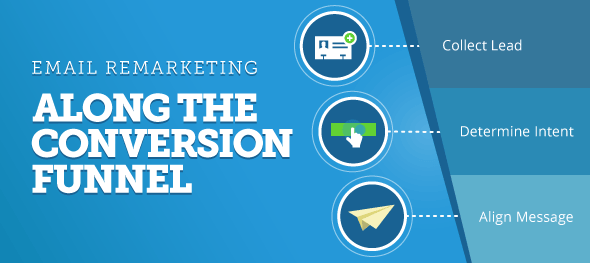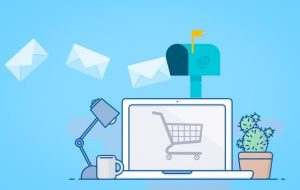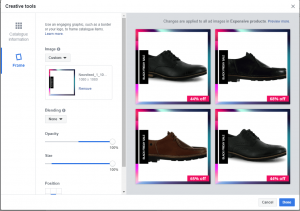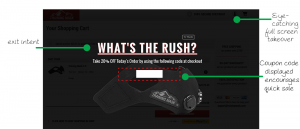
Email remarketing is arguably the single most powerful tool in an online marketer’s toolbox when it comes to reigniting abandoned leads. When done right, email remarketing is a very complex process, but broken down into its fundamental pieces, there are just three, basic steps:
- Acquiring contact information,
- Identifying user intent,
- Dispatching the appropriate message.
With the proper planning and creative thinking, all three of these steps are achievable at the beginning, middle, and end of the conversion funnel. Today, we’re going to break down email remarketing strategy by position in the funnel and discuss the essential ingredients to a successful lead-recovery campaign.
Email Remarketing to Early-Funnel Abandons
As visitors begin their session and view products, they’re considered early-funnel visitors. It’s at this stage that consumers are making their first considerations and evaluating your product. Here, visitors have little commitment to your store, meaning the email remarketer has to take a more forward approach.

1. Acquiring Contact Information
Arguably the most difficult part of remarketing during the early phases of the conversion funnel is acquiring user contact details. As visitors enter and leave your site from landing and product pages, they’ve yet to come across any reason to offer up an email address. In this circumstance, it’s up to you to engage consumers.

Using an on-abandonment engagement solution allows you to intervene at the moment of abandonment and initiate a dialogue. Here, you can offer an incentive in exchange for the shopper’s email address. However, instead of engaging every single consumer that motions to leave your site, you’ll first want to identify shopper intent.
2. Identifying Intent
Through the careful analysis of behavioral clues and browsing patterns, you can get a better idea of which visitors are most likely to convert. Consider time spent on-site and the number of pages viewed. If one user moves through multiple product pages, spending a good amount of time on each, then they’re more likely to buy than the visitor who merely brushed the surface of your website before leaving. Look at the browsing patterns and only engage customers that demonstrate intent to convert.
3. Message Strategy
Once you’ve identified the prospective buyers, it’s time to develop a messaging strategy. Although you want messages to be interesting and engaging, it’s generally wise to keep emails general as opposed to product-specific. Highlight your latest and greatest deals, showcase a few best-sellers, or show off a few new arrivals.
Email Remarketing to Mid-Funnel Abandons
As soon shoppers add a product to their cart, they transition into the mid-funnel. Here, visitors have demonstrated greater intent to purchase and interest in individual products.

 1. Acquiring Contact Information
1. Acquiring Contact Information
Again, acquiring contact information here can be a bit tricky. While users are adding items to their shopping cart, they still have little reason to volunteer contact details. Thankfully, there are a few techniques to consider.
- Session Matching – Use active cart data to see if the IP address of the visitor matches up with any previous purchaser. If a match exists, there’s a chance that the email address on file is valid for the current visitor. If the user later abandons, it’s worthwhile to reach out.
- Proactive Support – Engage users with active carts using an automated chat solution and offer customer support to any hesitant or idle visitors. Should the conversation develop, request user contact details in exchange for small purchasing incentives.
2. Identifying Intent
It’s a general rule: As users move further down the conversion funnel, their intent to purchase increases. That being said, it’s not safe to assume that each visitor who selects a product is committing to a purchase. This is where you need to get creative.
While there’s no foolproof indicator of intent, look at time spent on the shopping cart page. If a user has wantonly added products to their cart without ever viewing their order summary, they may just be dog-earing products for later . Analyze your average purchaser’s behaviors and pull out some common patterns.
3. Message Strategy
As you start to get an idea of an order’s contents, your messaging strategies can become much more sophisticated. Bring in product imagery dynamically to establish immediate relevance and, if available, leverage user reviews of that product to build purchase confidence.
Additionally, look for little hints at the motivations behind abandonment. For example, if you have a shipping fee calculator, determine whether the shopper used this before abandoning. If so, offer free shipping in lieu of a percentage discount.
Email Remarketing to Late-Funnel Abandons
As users move past the cart and begin checkout, they’ve entered the late funnel. At this point, checkout is most uncommon and most frustrating for vendors, as the conversion is mere clicks away. Fortunately, email remarketing is most effective among late-funnel abandons.

1. Acquiring Contact Information
Once a shopper has reached checkout, making contact becomes a little simpler. Although logging in to checkout is quickly becoming a thing of the past, many ecommerce sites will still request an email address before guest checkout even begins. This isn’t an accident; by collecting email addresses as early as possible, you can easily open up a channel of communication with abandoning shoppers.
If you don’t have an email gate before checkout, it’s a best practice to request an email address first among your form fields.
2. Identifying Intent
At checkout, average abandonment rates drop to 56.3%, which is significantly lower than the 70.1% average of the shopping cart. It’s safe to assume that shoppers who reach this point are looking to buy. If you have the contact information for a shopper, initiate remarketing efforts.
3. Message Strategy
The advantage to remarketing an order left at checkout is that you have a very clear understanding of exactly what it is the shopper intends to buy. Populate your email dynamically with images of the products left.
Purchase intent is typically very high by the time users reach checkout, so it may be wise to temper the use of discounts. Initiate a series of emails that culminate in a small purchasing incentive to tip the scale in favor of conversion.
Email remarketing is an exceptionally dynamic solution that, when tweaked, can fit nearly any conversion funnel. As with any ecommerce strategy, the best advice we can give is to continually test, refine, and optimize until you find your stride!
(229)
Report Post





